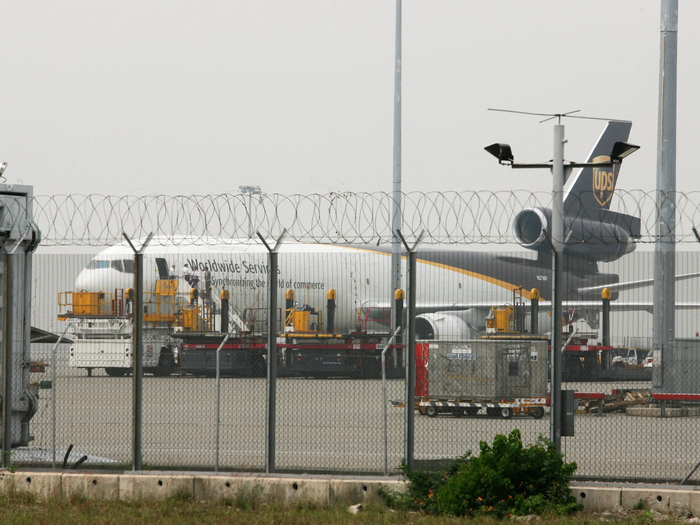
UPDATE: A preliminary investigation by the National Transportation Safety Board (NTSB) has revealed that metal fatigue was the critical factor in the tragic crash of a UPS cargo jet in Louisville, Kentucky, which resulted in the deaths of 14 people earlier this month. This urgent update comes as the aviation community grapples with the implications of such a rare incident.
The NTSB’s report, released just hours ago, indicates that the left engine of the McDonnell Douglas MD-11 freighter detached from its wing during takeoff due to metal fatigue and stress-related failures in the hardware. Graphic images included in the report show the moment the engine broke free, impacting the fuselage of the aircraft intended for Honolulu.
The crash, which occurred shortly after takeoff from Muhammad Ali International Airport, has led to widespread concern. The aircraft initially climbed to about 30 feet before crashing into a UPS warehouse and subsequently striking multiple structures, including a petroleum recycling facility. In addition to the fatalities, 23 individuals on the ground sustained injuries during this devastating incident.
The NTSB’s findings highlight critical evidence of fatigue cracks and overstress failures in the components connecting the engine to the wing. The Federal Aviation Administration (FAA) has since grounded the entire MD-11 fleet operated by UPS and FedEx, raising alarms about the safety of older aircraft.
Authorities are drawing parallels between this incident and the much-deadlier 1979 American Airlines Flight 191 crash, which claimed 273 lives when the left engine of a DC-10 detached during takeoff from Chicago-O’Hare International Airport. Such catastrophic failures due to metal fatigue are rare but pose significant risks, as evidenced by past incidents including a 2018 Southwest Airlines flight that resulted in a fatality due to engine failure.
The MD-11 involved in the Louisville crash had a long service history, originally delivered in 1991 before being acquired by UPS in 2006. The NTSB has confirmed that its investigation into this tragedy is ongoing, with further details expected to emerge as they analyze wreckage and maintenance records.
As the aviation industry watches closely, this incident serves as a stark reminder of the potential dangers lurking in aging aircraft. Stakeholders are urged to remain vigilant as new safety protocols and inspections may result from these findings.
What happens next? The NTSB will continue its investigation, with a focus on determining the full extent of the issues that led to this catastrophic failure. Industry experts and safety regulators will be monitoring these developments closely, with implications for air travel safety worldwide.
Stay tuned for more updates as this story develops.





